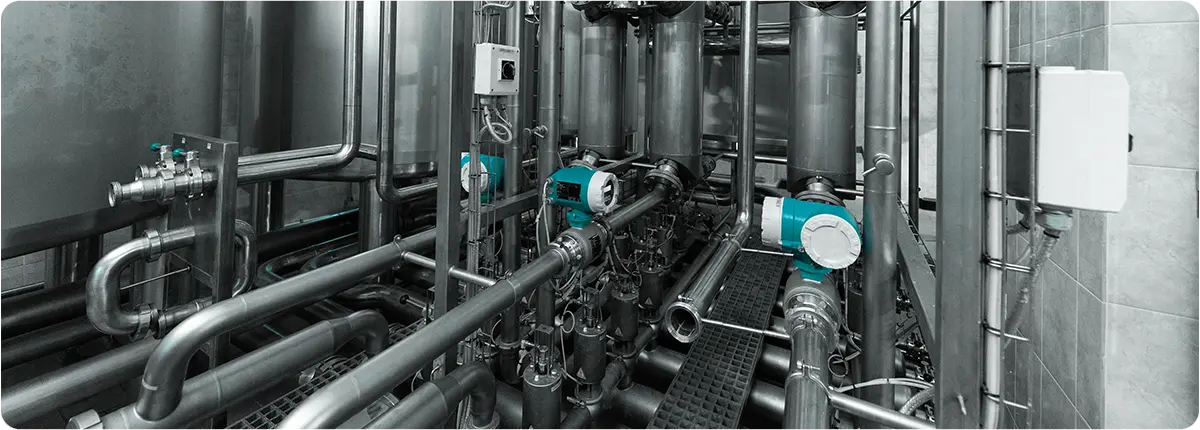Metal Tube Flowmeters and Industrial Applications
Metal tube flowmeters are robust instruments designed for accurate flow measurement under high pressure, high temperature, and aggressive fluid conditions. Compared to glass tube rotameters, they offer greater durability and are widely used in chemical, petrochemical, power generation, water treatment, food, and pharmaceutical industries.

WORKING PRINCIPLE
They operate on the variable area principle. As the fluid flow increases, the float rises. In metal tube designs, the float position is detected either by magnetic sensors or mechanical indicators.
Fundamental equation:
Q = C · A(h) · √(2ΔP / ρ)
Q: flow rate, C: coefficient, A(h): cross-sectional area depending on float position, ΔP: pressure drop, ρ: fluid density.
STRUCTURAL FEATURES
- Measuring tube: stainless steel or alloy steel
- Float: selected with different densities for higher accuracy
- Indicators: Mechanical (pointer type) or electronic (4-20 mA, HART, Profibus)
- Operating range: up to 100 bar pressure and 400 °C temperature
ADVANTAGES AND LIMITATIONS
Advantages:
- Reliable under harsh process conditions
- Suitable for both liquids and gases
- Easy integration with automation systems through electronic outputs
Limitations:
- More expensive than glass tube models
- Limited direct visual observation, relies on indicators
APPLICATION AREAS
- Acid/alkali measurement in chemical and petrochemical plants
- Steam and condensate flow monitoring in power plants
- Chemical dosing control in water treatment facilities
- Hygienic process monitoring in food and pharmaceutical industries
STANDARDS AND CALIBRATION
- ISO 5167: Flow measurement standards
- ASME MFC: Standards for flow measurement devices
- ATEX-certified versions: For explosive atmospheres
- Regular calibration required to maintain accuracy
CONCLUSION
Metal tube flowmeters play a vital role in modern industry due to their durability and reliability. By combining with digital technologies, they can be seamlessly integrated into automation systems, contributing to process optimization and efficiency.
 Convalve
Convalve Convalve
Convalve